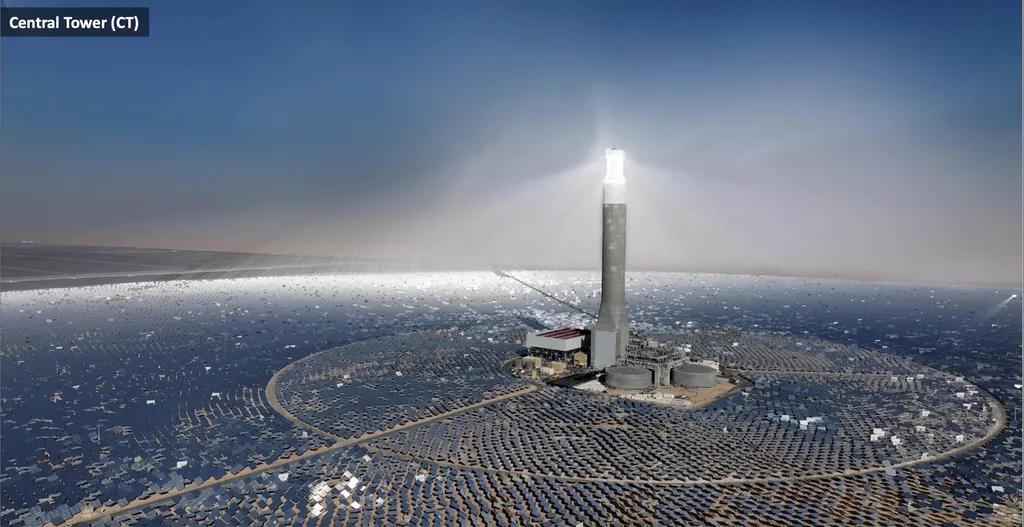In the heart of Malaysia, a small-scale solar power tower (SPT) system is making waves in the renewable energy sector, offering promising insights into optimizing solar energy collection. Researchers at Universiti Teknologi PETRONAS (UTP), led by Zeshan Aslam from the Mechanical Engineering Department, have conducted a comprehensive optical performance analysis of a heliostat field layout, shedding light on how to maximize efficiency in solar power generation.
The study, published in the journal “Energy Nexus” (which translates to “Energy Connection”), focuses on the critical role of heliostat field configuration and optical loss management in enhancing the performance of SPT systems. Using advanced ray-tracing simulations via Tonatiuh software and MATLAB for quantitative analysis, the team quantified optical losses due to factors such as cosine loss, shading, blocking, spillage, and reflectivity.
“The results showed a very good agreement between Tonatiuh and MATLAB, with a maximum deviation of 7%,” Aslam noted. This high level of accuracy is crucial for reliable performance predictions and system optimization. The simulations revealed that the power concentration was at its peak between 11 AM and 3 PM, with the highest efficiency observed at 1 PM. Notably, the heliostat positioned due north of the tower exhibited the highest cosine efficiency and power output.
One of the most significant findings was the variation in optical efficiency throughout the year, with the maximum efficiency of 60.94% recorded in December. This seasonal variation underscores the importance of tailored configurations and strategies to optimize performance under different conditions.
The implications of this research are substantial for the energy sector. Aslam explained, “Our results provide valuable insights for the optimization of small-scale SPT fields under equatorial conditions.” This could pave the way for more efficient and cost-effective solar power solutions, particularly in regions with similar climatic conditions.
The study’s findings highlight the potential for improving the commercial viability of solar power tower systems. By understanding and mitigating optical losses, developers can enhance the overall efficiency and reliability of these systems, making them more attractive for investment and deployment. As the world continues to seek sustainable energy solutions, this research offers a promising path forward for the solar industry.
Aslam’s work at UTP not only advances the scientific understanding of heliostat field performance but also sets the stage for future innovations in solar energy technology. By optimizing field layouts and managing optical losses, the energy sector can move closer to achieving more efficient and sustainable solar power generation. This research is a testament to the ongoing efforts to harness the sun’s energy more effectively, contributing to a cleaner and more sustainable future.

